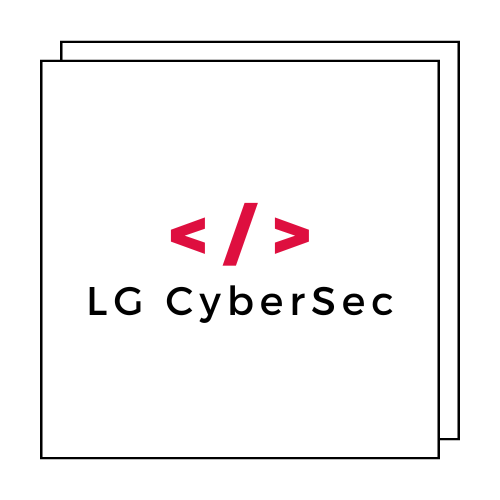In an alarming cybersecurity discovery that has sent shockwaves through the digital security community, researchers have uncovered a massive database containing 182,962,095 breached accounts linked to the Synthient Stealer Log threat. This staggering breach represents one of the largest collections of stolen credentials discovered in 2025, highlighting the growing sophistication and scale of information stealer malware campaigns targeting businesses and consumers alike.
For small and medium-sized businesses (SMBs) and everyday internet users, this discovery serves as a critical wake-up call. The sheer volume of compromised accounts demonstrates how widespread info stealer threats have become, making it essential for organizations of all sizes to understand these risks and implement robust protection strategies.
Understanding the Synthient Stealer Log Threat
The Synthient Stealer Log represents a collection of data harvested by information stealer malware, commonly known as “infostealers.” These malicious programs are designed to silently infiltrate systems and extract valuable data including login credentials, browser cookies, cryptocurrency wallets, and other sensitive information.
Information stealer malware has become increasingly popular among cybercriminals due to its effectiveness and the valuable data it can harvest. Unlike traditional ransomware that demands immediate payment, infostealers operate covertly, allowing attackers to gather intelligence over extended periods before monetizing the stolen data.
The discovery of this massive database highlights several concerning trends in the cybersecurity landscape:
- Scale of Operations: The 182+ million compromised accounts demonstrate the industrial scale of modern cybercrime
- Targeting Breadth: These attacks don’t discriminate between large enterprises and small businesses
- Data Persistence: Stolen credentials often remain valuable for months or years after initial compromise
- Underground Markets: Harvested data feeds thriving cybercriminal marketplaces
The Anatomy of Information Stealer Attacks
To protect against threats like the Synthient Stealer, it’s crucial to understand how these attacks typically unfold. Cybersecurity experts have identified several common attack vectors used by information stealer malware:
Initial Infection Methods
Phishing Campaigns: Cybercriminals often distribute infostealers through sophisticated email campaigns that appear to come from legitimate sources. These emails may contain malicious attachments or links that, when clicked, download and install the stealer malware.
Software Bundling: Malicious actors frequently package infostealers with legitimate software downloads, particularly targeting users who download software from unofficial sources or peer-to-peer networks.
Exploit Kits: Attackers leverage vulnerabilities in web browsers and plugins to automatically download and execute stealer malware when users visit compromised websites.
Social Engineering: Criminals use psychological manipulation to trick users into voluntarily installing malware, often disguising it as security updates, system optimizers, or other useful utilities.
Data Harvesting Process
Once installed, information stealers typically target multiple data sources including browser storage, system files, and application databases. The malware systematically extracts saved passwords, autofill data, browsing history, cookies, and even cryptocurrency wallet information before transmitting this data to remote servers controlled by cybercriminals.
Impact on Small and Medium-Sized Businesses
The Synthient Stealer Log threat poses particular risks for SMBs, who often lack the extensive cybersecurity resources of larger enterprises. Recent studies show that 58% of SMBs spent more than planned on cybersecurity in 2024, highlighting the growing recognition of these threats.
For small businesses, the consequences of credential theft can be devastating:
- Business Email Compromise: Stolen email credentials enable attackers to conduct fraudulent transactions and deceive customers
- Financial Theft: Access to banking and payment system credentials can result in direct financial losses
- Data Breaches: Compromised business accounts may provide access to customer data and sensitive business information
- Reputation Damage: Security incidents can severely impact customer trust and brand reputation
- Operational Disruption: Recovery from credential compromise often requires significant time and resources
The interconnected nature of modern business systems means that a single compromised credential can potentially provide access to multiple services and platforms, amplifying the impact of the initial breach.
Consumer Risks and Personal Data Exposure
Individual consumers face equally serious risks from information stealer threats. The 182+ million accounts in the Synthient Stealer Log likely include personal email accounts, social media profiles, online banking credentials, and e-commerce platforms.
Personal data exposure can lead to various harmful outcomes:
- Identity Theft: Comprehensive personal information enables sophisticated identity fraud
- Financial Fraud: Banking and payment credentials provide direct access to financial accounts
- Account Takeovers: Social media and email account compromise can facilitate further attacks
- Privacy Violations: Personal communications and private data may be exposed or exploited
- Secondary Attacks: Compromised accounts often serve as launching points for attacks against friends, family, and colleagues
Cybersecurity researchers note that information stealer malware has become one of the primary vectors for initial access in many cyberattack campaigns, making personal protection crucial for both individual and organizational security.
Essential Protection Strategies
Protecting against information stealer threats requires a multi-layered approach combining technology solutions with security awareness. Professional cybersecurity services can help organizations implement comprehensive protection strategies tailored to their specific needs.
Technical Safeguards
Endpoint Security: Deploy advanced antimalware solutions that use behavioral analysis and machine learning to detect previously unknown threats. Traditional signature-based antivirus software alone is insufficient against modern infostealers.
Browser Security: Configure web browsers with enhanced security settings, including disabling unnecessary plugins, enabling automatic updates, and using reputable ad blockers to reduce exposure to malicious advertisements.
Network Monitoring: Implement network security tools that can detect unusual outbound traffic patterns indicative of data exfiltration attempts.
Email Security: Deploy advanced email filtering solutions that can identify and block phishing attempts and malicious attachments before they reach end users.
Access Control Measures
Multi-Factor Authentication (MFA): Implement MFA across all critical business and personal accounts. Even if credentials are stolen, additional authentication factors provide a crucial security barrier.
Privileged Access Management: Limit administrative privileges and regularly review access permissions to minimize the potential impact of compromised accounts.
Password Management: Use dedicated password managers to generate and store unique, complex passwords for each account. This limits the damage if any single credential is compromised.
Organizational Policies
Security Awareness Training: Regular training programs help employees recognize phishing attempts, suspicious downloads, and other common attack vectors used to distribute information stealer malware.
Incident Response Planning: Develop and regularly test procedures for responding to suspected credential compromise, including steps for password resets, account monitoring, and communication protocols.
Software Asset Management: Maintain an inventory of all software installations and ensure timely application of security patches and updates.
Detection and Response
Early detection of information stealer infections is crucial for minimizing damage. Organizations and individuals should monitor for several warning signs that may indicate compromise:
- Unexplained account lockouts or password reset notifications
- Unusual network traffic or slow internet performance
- Unexpected software installations or system modifications
- Suspicious email activity or unauthorized account access
- Alerts from security software about potential threats
If compromise is suspected, immediate action is essential:
- Isolate Affected Systems: Disconnect compromised devices from the network to prevent further data loss
- Change Credentials: Reset passwords for all potentially affected accounts, starting with the most critical
- Scan and Clean: Perform comprehensive malware scans and removal procedures
- Monitor Accounts: Closely watch for signs of unauthorized access or fraudulent activity
- Professional Assessment: Consider engaging cybersecurity professionals for thorough incident response
Looking Ahead: The Evolving Threat Landscape
The massive scale of the Synthient Stealer Log discovery reflects broader trends in the cybersecurity landscape. Industry analysts predict that information stealer malware will continue to evolve, becoming more sophisticated and harder to detect.
Emerging trends include:
- AI-Enhanced Attacks: Criminals are beginning to leverage artificial intelligence to create more convincing phishing campaigns and evade security controls
- Cloud-Focused Targeting: Increasing focus on stealing cloud service credentials as organizations migrate to cloud-based systems
- Mobile Platform Expansion: Growing development of information stealers targeting smartphones and tablets
- Cryptocurrency Integration: Enhanced capabilities for stealing cryptocurrency wallets and related authentication information
To stay ahead of these evolving threats, organizations must maintain adaptive security strategies that can respond to new attack techniques and vectors.
Building Resilient Security Postures
The discovery of the Synthient Stealer Log serves as a powerful reminder that cybersecurity is not a destination but an ongoing journey. For SMBs and consumers alike, building resilience against information stealer threats requires commitment to continuous improvement and adaptation.
Key principles for building effective defenses include:
- Defense in Depth: Implement multiple layers of security controls rather than relying on single solutions
- Regular Assessment: Conduct periodic security assessments to identify vulnerabilities and gaps
- Continuous Learning: Stay informed about emerging threats and evolving best practices
- Professional Guidance: Work with experienced cybersecurity professionals to develop tailored protection strategies
Security experts emphasize that the most effective protection comes from combining robust technical controls with strong security awareness and incident response capabilities.
Conclusion: Taking Action Against Information Stealer Threats
The massive Synthient Stealer Log containing over 182 million compromised accounts represents a stark illustration of the scale and sophistication of modern cybercriminal operations. For small and medium-sized businesses and individual consumers, this discovery underscores the critical importance of implementing comprehensive cybersecurity measures.
Information stealer malware poses serious risks to organizations of all sizes, but the impact on SMBs can be particularly devastating due to limited resources and recovery capabilities. By understanding these threats and implementing appropriate safeguards, businesses and individuals can significantly reduce their risk of becoming victims.
The key to effective protection lies in adopting a proactive, multi-layered approach that combines technical security controls with user education and incident response planning. Regular security assessments, employee training, and collaboration with experienced cybersecurity professionals provide the foundation for robust defense against evolving threats.
As the cybersecurity landscape continues to evolve, staying informed and maintaining adaptive security strategies will be essential for protecting against both current and emerging threats. The Synthient Stealer Log discovery serves as a wake-up call, but it also presents an opportunity for organizations and individuals to strengthen their security postures and build resilience against future attacks.
Don’t wait for a security incident to take action. Contact cybersecurity professionals today to assess your current security posture and develop a comprehensive protection strategy tailored to your specific needs and risk profile. In the fight against information stealer malware and other cyber threats, proactive preparation is your best defense.

